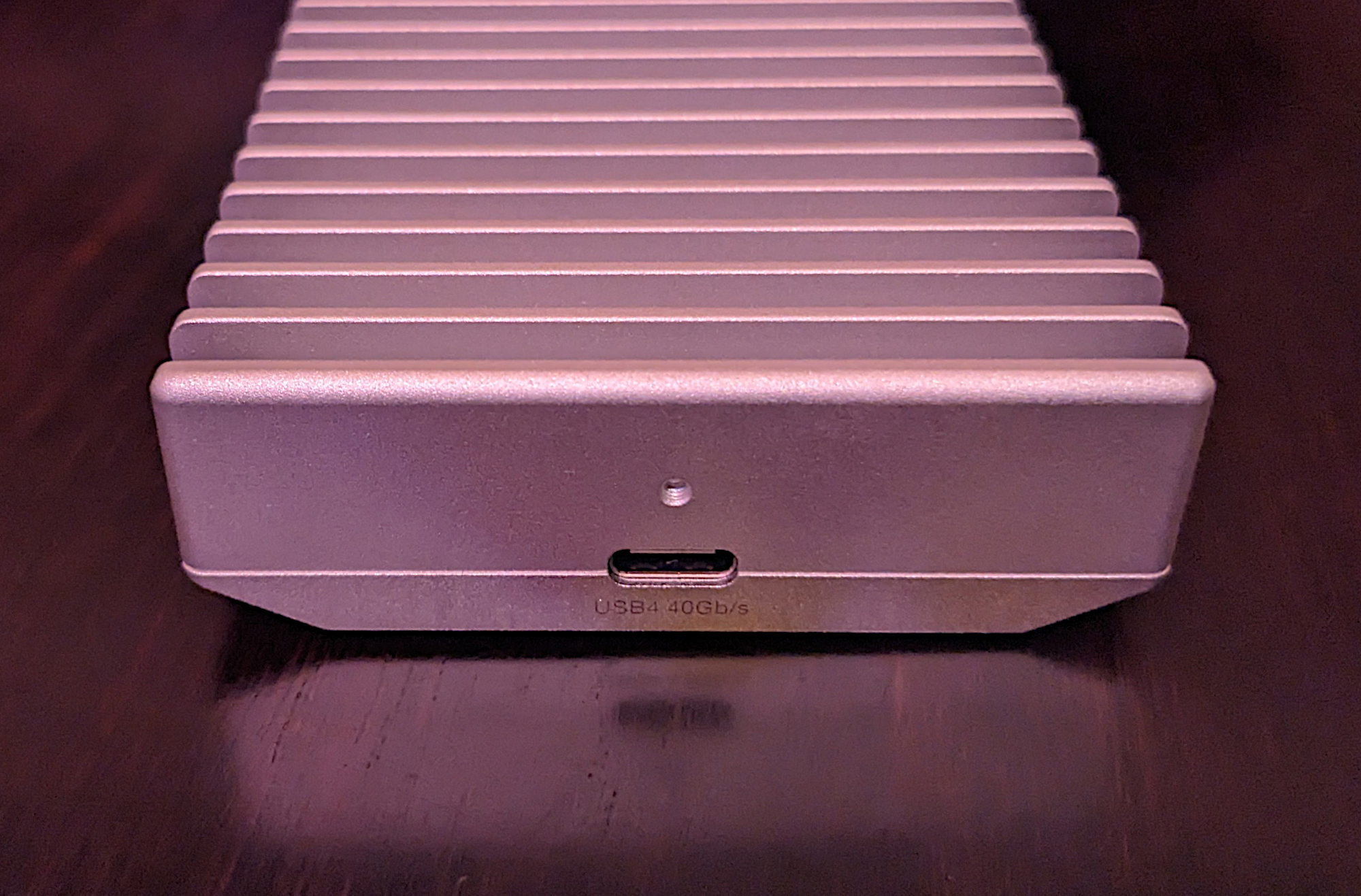Expert's Rating
Pros
- Fast 20Gbps performance
- Modular storage
- More affordable than you might think (as currently discounted)
Cons
- Some non-fatal operational glitches
Our Verdict
The 20Gbps Sandisk Pro-Blade Transport with its removable cartridges is a nigh on perfect system for fast rotating backup, as well as for organizing projects by their own media. Alas, a few non-fatal operational glitches cost it half a star for now.
Best Prices Today: Sandisk Pro-Blade Transport
If you’re looking for a fast, sleek, removable media storage system, Sandisk’s $50 Pro-Blade Transport with its modular SSD cartridges ($120/1TB to $300/4TB) has you covered.
Why modular/removable? So you can rotate backup media, store copies off-site, as well as segregate separate projects onto their own discrete media. Modular also allows you to expand your TB count over the same connection so you have slim, and in this case, handsome cartridges, as clutter rather than a slew of larger drives.
Further reading: See our roundup of the best external drives to learn about competing products.
What are the Pro Blade’s design and features?
The Pro-Blade Transport system is based around a stylish $50, portable docking unit, the “Transport,” which measures approximately 5.1-inches long, by 2.8-inches wide, by a little over 0.6-inches high. It weighs just under 6 ounces.
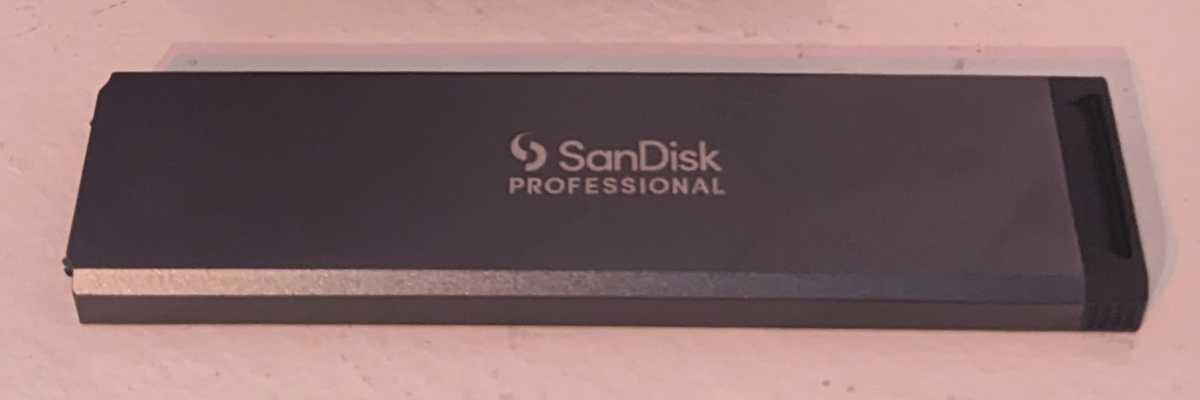
The 20Gbps USB Type-C-connected Transport features a single slim bay/port that accepts thin SSD modules called “Mags” (no doubt short for magazine — as in firearms), which are only 4.3-inches long, by 1.1-inches wide, by 0.3-inches thick. If that seems awful close to the size of a 2280 NVMe SSD, that’s undoubtedly what’s inside.
Note that while Sandisk of course won’t encourage it, and it will likely break your five-year warranty, you can remove the SSD from the cartridge if for some reason the dock goes belly up and you really need the data.
The Mags are available at $120 for 1TB, $180 for 2TB, and $300 for 4TB. When I was first asked about reviewing the system, I was expecting higher boutique pricing and while those prices are reasonable, they are heavily discounted from the official MSRP.
Understandably, we like the lower prices. Often the discounts of major vendor’s hang around quite a while. Here’s hoping.

Interestingly enough, the Pro-Blade Mags that Sandisk sent us were formatted to Apple’s APFS. That says a whole lot about the target audience — a target audience used to paying quite a bit more.
But this is PCWorld, and Windows users with a need for fast rotating media backup or library storage will also be interested in the Pro-Blade Transport system.
How fast is the Pro Blade system?
The Pro-Blade Transport system with the 2TB Mag installed that we tested was no slouch across the 20Gbps USB bus — lagging behind only OWC’s outstanding 1M2 (a 40Gbps drive tested at 20Gbps) and USB4/Thunderbolt models in overall performance.
We, of course, would’ve liked to see Sandisk opt for 40Gbps USB4, which the TLC NVMe SSDs inside the Mags can handle easily. But 40Gbps ports are still a very rare commodity and upping the speed would no doubt have increased the price of the Transport.
20Gbps translates to roughly 2GBps sustained transfers, which is still very fast, yet with reduced power consumption and lower operating temperatures compared to 40Gbps options such as USB4 and Thunderbolt 3/4. These are not petty concerns.
Below you can see that the Pro-Blade Transport did very well in CrystalDiskMark 8’s sequential tests. The single-queue, single-thread sequential read was a tad disappointing, but the other scores were top notch.

Random 4K performance suffered no major letdowns, with the Pro-Blade Transport maintaining the pace in every individual test — excepting its loss to the fantastic Express 1M2 in the random read.
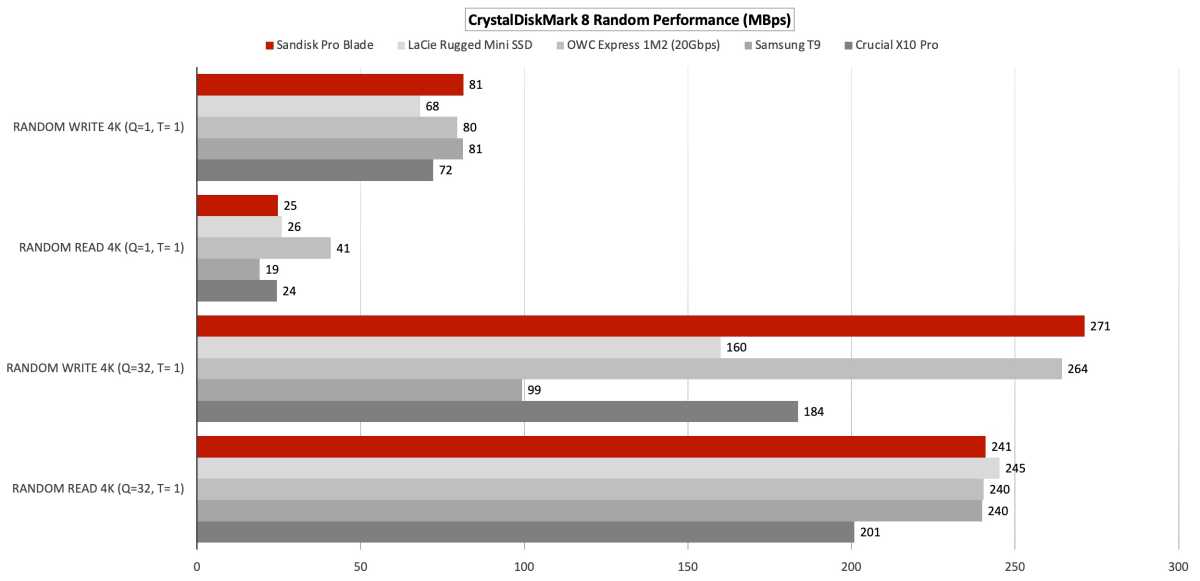
The Pro-Blade Transport also did very well in our real-world 48GB transfers, finishing only a few seconds behind the OWC 1M2.
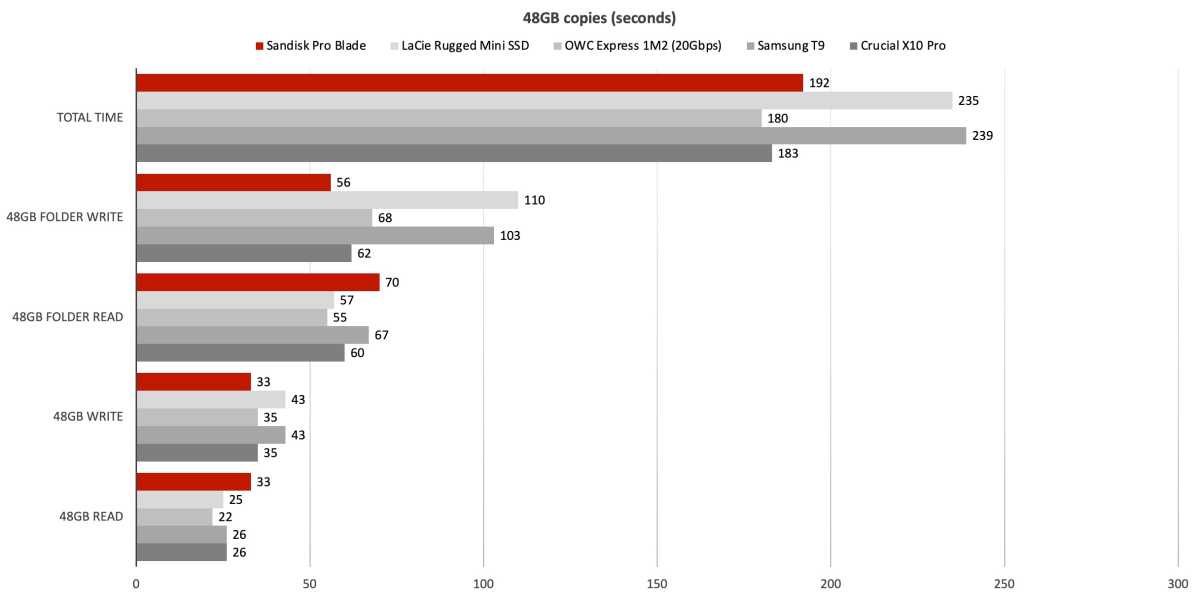
The Sandisk Pro Blade maintained throughput over the entirety of our 450GB write, and given enough time to reassemble the secondary cache, was able to maintain this pace even with the 2TB mag approaching full capacity.
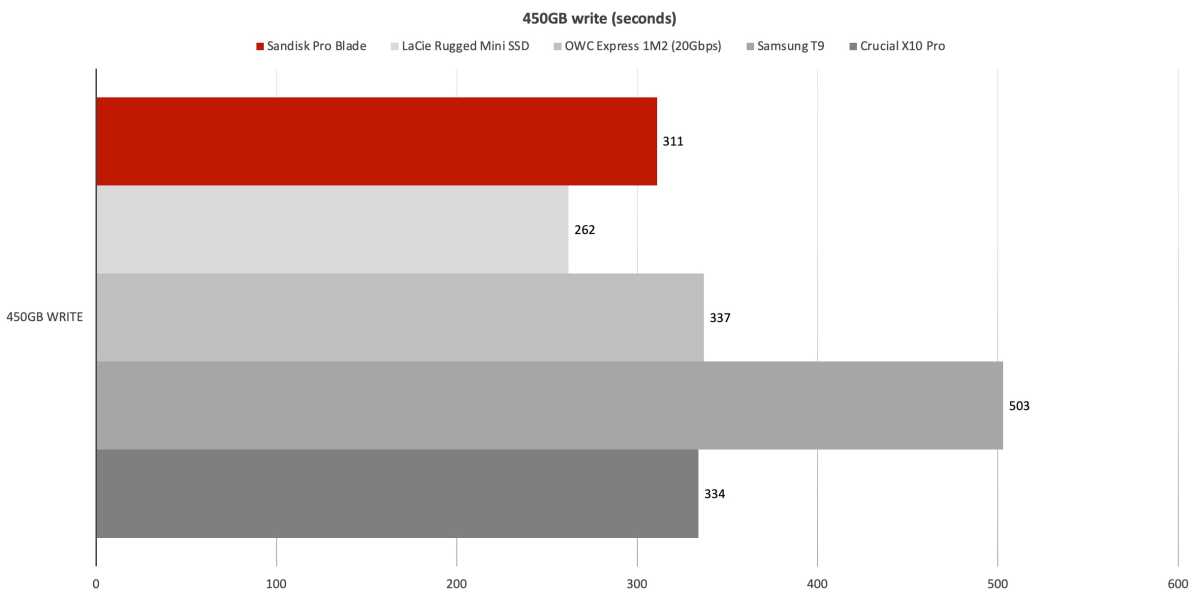
Alas, I did run into some issues during testing of the Pro-Blade system. First it crashed AS SSD 2.0 during its 4K/64 thread test using a 10GB data set when all tests were run at the same time.
This is something I’ve never seen before, and am discussing the matter with Sandisk. If I had to guess, it had something to do with caching as I was able to complete the 10GB 4K/64 thread and access time tests if run individually. AS SSD did not crash with the smaller 1GB data set employed.
Also, there were no issues with the 10GB data set on our older AMD storage test bed. Perhaps it’s an isolated compatibility issue with the current test bed (see the end of the article for a description).
However, under the stress of deleting one 450GB file, then immediately trying to write it back, the copy process hung and messed up things to the point that Task Manager wouldn’t open. I had to shut down the system using a 10-second power button press then restart to get things going again. Upon reboot, disk manager told me the drive needed initializing, but then threw an error when I tried.

It was at this point that I decided to unplug the Transport then plug it in again. Voila! The drive was back to normal, and more importantly for this discussion — all the data was intact. If it had not been, you could kiss another half star goodbye.
While none of these glitches were fatal, nor likely to occur to the average user, the Pro-Blade Transport firmware likely needs some fine tuning. No doubt, removable/modular is more finicky than static storage, but I had to dock that first half star.
Note that the Pro-Blade Transport performed flawlessly on my Mac Studio with macOS and the Mag formatted to APFS, albeit under considerably less stress.
Should you buy the Sandisk Pro-Blade Transport system?
Yes! If you’re willing to accept the chance of an occasional non-fatal operational inconsistency and the discounted prices are still available. The system could be a wonderful addition to any prosumer or intense hobbyist setup.
But at the full retail price, you’re paying a hefty premium for what is essentially a housekeeping convenience. It’s also a lot to pay given the the glitches I experienced.
I’ll retest and update this review once Sandisk ameliorates the issues I experienced.
How we test
Storage device tests currently utilize Windows 11, 64-bit running on an X790 (PCIe 4.0/5.0) motherboard/i5-12400 CPU combo with two Kingston Fury 32GB DDR5 4800MHz modules (64GB of memory total). Both 20Gbps USB and Thunderbolt 4 are integrated to the back panel and Intel CPU/GPU graphics are used. The 48GB transfer tests utilize an ImDisk RAM disk taking up 58GB of the 64GB of total memory. The 450GB file is transferred from a 2TB Samsung 990 Pro which also runs the OS.
Each test is performed on a newly formatted and TRIM’d drive so the results are optimal. Note that in normal use, as a drive fills up, performance may decrease due to less NAND for secondary caching, as well as other factors. This is less of a factor with the current crop of SSDs with their far faster NAND.
Caveat: The performance numbers shown apply only to the drive we were shipped and to the capacity tested. SSD performance can and will vary by capacity due to more or fewer chips to shotgun reads/writes across and the amount of NAND available for secondary caching. Vendors also occasionally swap components. If you ever notice a large discrepancy between the performance you experience and that which we report, by all means, let us know.





